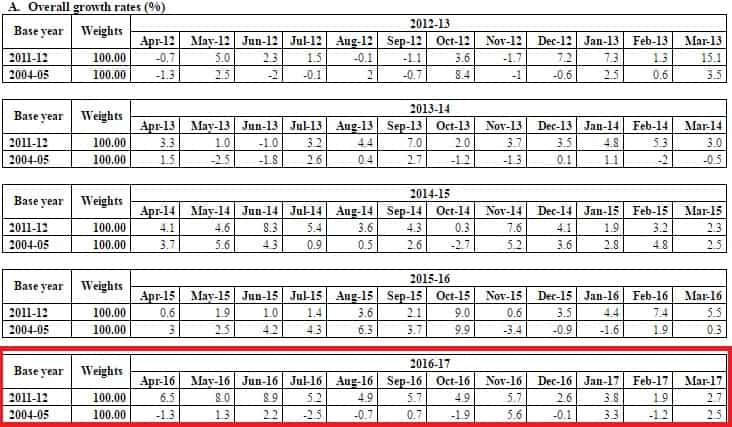Ministry of Statistics & Programme Implementation on Wednesday released India's Gross Domestic Product (GDP) numbers for the quarter January-March 12017. It said that India's GDP for the fourth quarter stood at 6.1%. And, for the full financial year, GDP stood at 7.1%.
The numbers came as a surprise simply because in the previous quarter despite the announcement of demonetisation, GDP rose to 7.1%.
ALSO READ: Demonetisation impacts India's GDP: 10 key things to know
However, with economists and analysts blaming demonetisation move for nearly 1% drop in India's growth, there is still hope.
That hope is Goods and Service Tax (GST). But, will it help in reviving the country's growth?
GST is set to be rolled out from July 1, 2017 and the GST Council, in its meet in Srinagar on May 18, 2017, decided on tax rates for 1,211 items.
14% of the items have been brought under the 5% GST slab, 17% items in 12% tax slab, 43% items in 18% tax slabs and only 7% have been exempted from GST ambit.
In April, US Federal Reserve paper read, "The goods and services tax (GST) can boost India's GDP growth by up to 4.2% -- double the previous estimate -- as lower taxes on manufactured goods will bump up output and make products cheaper."
ALSO READ: GST to boost GDP growth by 4.2%, make products cheaper: US Fed paper
Giving reason behind the positive impact of GST on GDP, Federal Reserve said under the existing structure, at each point of sale, additional taxes are applied to the after-tax value of each goods and services.
The main purpose for GST is to eliminate this compounding effect by fixing the final tax rate, where goods will fall into one of the four rate categories of 5, 12, 18, and 28%.

Now, if you look at the recent factory output data, which was released on May 12, based on 2011-12 series, factory output or IIP grew by 2.7% in March as against 1.9% in the month of February.
The new series industrial output shows much higher growth as against IIP with previous base year of 2004-05. As per the monthly industrial output figures for 2012-13 to 2016-17, IIP contracted in five months in the new series, while as per 2004-05 series, the contraction was recorded for 22 months.
For 2016-17, factory output grew 5% with the new base year of 2011-12 as against 0.7% growth with the old base year and 3.4% growth last year with the new base year.
With the implementation of GST, the productivity is estimated to increase further.
ALSO READ: GST to help push India's growth above 8%: IMF
The International Monetary Fund, last week said that the GST will replace the myriad local levies with a single tax, would enhance production and the movement of goods and services across Indian states. This would contribute to putting the economy into a faster growth trajectory.
Hence, for the coming quarters it will be interesting to see whether GST helps in uplifting India's growth.
06:54 PM IST







 Anarock budget wish list for realty sector: Industry status, more bank funds, ITC benefit in GST
Anarock budget wish list for realty sector: Industry status, more bank funds, ITC benefit in GST India's GDP growth rate comes in at 5.8% in Q4FY19 - Here's how various sectors performed
India's GDP growth rate comes in at 5.8% in Q4FY19 - Here's how various sectors performed  Falling NPAs can give a 60-bps booster shot to GDP this fiscal
Falling NPAs can give a 60-bps booster shot to GDP this fiscal CAD widens to 2.5 pc of GDP in Q3
CAD widens to 2.5 pc of GDP in Q3 Fiscal deficit crosses 134 pc of budget estimate at Feb-end
Fiscal deficit crosses 134 pc of budget estimate at Feb-end